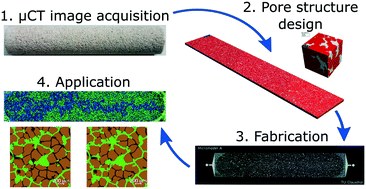Real structure micromodels based on reservoir rocks for enhanced oil recovery (EOR) applications
Abstract
Although the application of microfluidics is not new in the petroleum industry, the upscaling of fluid flow behavior from micromodels to reservoir rocks is still challenging. In this work, an attempt to close the gaps between micromodels and reservoir rocks was performed by constructing micromodels based on the X-ray micro-computed tomography (μCT) images of a Bentheimer core plug. The goal of this work was to build a digital 3D model of reservoir rocks and transfer its rock properties and morphological features such as porosity, permeability, pore and grain size distribution into a 2D microfluidics chip. The workflow consists of several steps which are (1) rock property extraction from a μCT image stack of the core plug, (2) micromodel pore structure design, (3) lithographic mask construction and (4) fabrication. Flooding experiments, including single- and two-phase flow experiments, were performed to confirm the micromodel design. As a result, the real structure micromodels show similar rock properties, as well as a comparable fluid flow behavior, to those of the Bentheimer core plug during typical water flooding and EOR polymer application. This framework demonstrates the potential for the general applicability of micromodels to support EOR studies on a larger scale, such as those on sandpacks or core plugs before field implementation.



 Please wait while we load your content...
Please wait while we load your content...